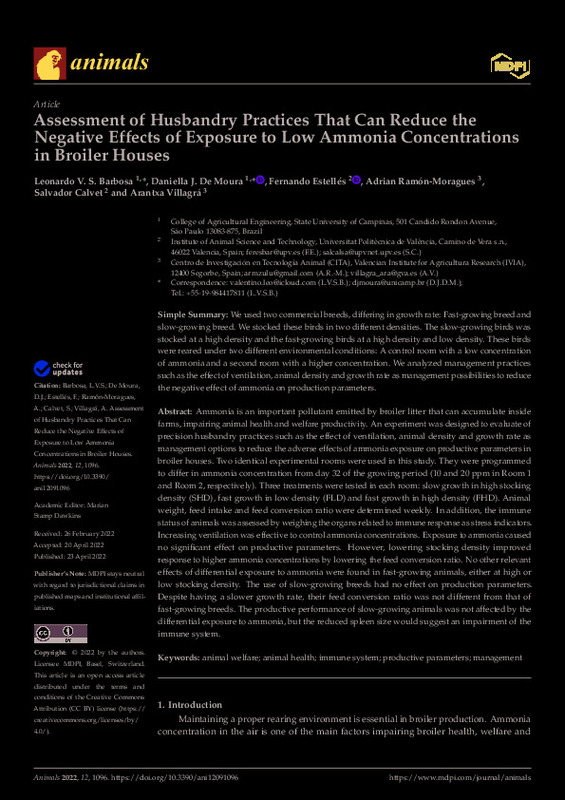JavaScript is disabled for your browser. Some features of this site may not work without it.
Buscar en RiuNet
Listar
Mi cuenta
Estadísticas
Ayuda RiuNet
Admin. UPV
Assessment of Husbandry Practices That Can Reduce the Negative Effects of Exposure to Low Ammonia Concentrations in Broiler Houses
Mostrar el registro completo del ítem
Barbosa, LVS.; De Moura, DJ.; Estellés, F.; Ramon-Moragues, A.; Calvet, S.; Villagrá, A. (2022). Assessment of Husbandry Practices That Can Reduce the Negative Effects of Exposure to Low Ammonia Concentrations in Broiler Houses. Animals. 12(9):1-11. https://doi.org/10.3390/ani12091096
Por favor, use este identificador para citar o enlazar este ítem: http://hdl.handle.net/10251/193383
Ficheros en el ítem
Metadatos del ítem
| Título: | Assessment of Husbandry Practices That Can Reduce the Negative Effects of Exposure to Low Ammonia Concentrations in Broiler Houses | |
| Autor: | Barbosa, Leonardo V. S. De Moura, Daniella J. Villagrá, Arantxa | |
| Entidad UPV: |
|
|
| Fecha difusión: |
|
|
| Resumen: |
[EN] Simple Summary We used two commercial breeds, differing in growth rate: Fast-growing breed and slow-growing breed. We stocked these birds in two different densities. The slow-growing birds was stocked at a high density ...[+]
|
|
| Palabras clave: |
|
|
| Derechos de uso: | Reconocimiento (by) | |
| Fuente: |
|
|
| DOI: |
|
|
| Editorial: |
|
|
| Versión del editor: | https://doi.org/10.3390/ani12091096 | |
| Código del Proyecto: |
|
|
| Agradecimientos: |
This research was funded by the National Institute for Agricultural Research and Experimentation and the Ministry of Economy, Industry and Competitiveness (RTA 2017-00013, Programme: MINECO, Ministerio de Economia y ...[+]
|
|
| Tipo: |
|









